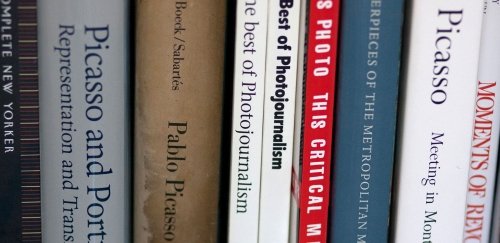Course Information
Here we provide information on course requirements, course descriptions and an Academic Rhode Map for each program, a semester-by-semester plan to help you toward graduation in four years.

Dive into the wonderful (and sometimes weird) world of art! As an art history major, you will learn about the famous and infamous, the sacred and profane, the celebrated and silenced. Study artists, artworks, architects, and structures from around the world and throughout time. You will gain the visual skills to interpret these works; the historical, social, and political understanding to place these works into context; and the skills to power your own research. You will examine objects through how they were created, seen, appreciated, and sometimes misunderstood.
Knowledge and skills learned in art history are valuable in the art world and beyond. Our graduates have worked locally at the Newport Art Museum, the RISD Museum, and Providence’s FirstWorks as well as at arts organizations across the country. They also work in information technology, marketing, ecommerce, and education. Recent alumni have gone to graduate school for art history, arts administration, teaching, and library and information science.
Art history is interdisciplinary; it draws from various fields in the humanities, sciences, technology, and even engineering. It also builds valuable skills that employers look for in candidates including critical thinking and analysis, presentation and public speaking, strong writing, research, problem-solving, attention to detail, the ability to work independently and in teams, open mindedness, broad historical and cultural knowledge, and creativity.1
Shape your resume as an art history student. At the Bannister Gallery, gain experience related to museum and gallery operations, curatorial practices, and arts administration. Get academic credit for internships at local institutions such as the Lippitt House Museum. Study Abroad in Asia, Europe, or South America with the help of scholarships from the Shinn Fund.
1 Alison Griswold Business Insider https://www.businessinsider.com/art-history-major-skills-2014-2
Rhode Island College is an exclusive member of the Common Application.
Here we provide information on course requirements, course descriptions and an Academic Rhode Map for each program, a semester-by-semester plan to help you toward graduation in four years.
Note: For information on transferring credit for courses taken at another institution or credit for advanced placement art courses, see Art Transfer Students or obtain guidelines in the main office of ALEX AND ANI Hall.
Upon completion of this program, students will be able to demonstrate:
The Art Department offers three separate undergraduate majors: art education, art history and studio art. Across these areas, students will learn to write clearly and analytically about works of art, whether they are made by the students themselves or by other artists.
If you are pursuing the studio art major (B.A. or B.F.A.), you must be able to write clear and interesting artist statements, job applications, and grant and commission proposals.
If you are pursuing the art history major, especially if you are interested in graduate studies, you must be able to write research papers. Jobs in museums and galleries require the ability to write clearly and concisely, including descriptions of artworks, business letters and grant applications.
If you are pursuing the art education major, you must be able to write lesson plans and other kinds of documents specific to the education field.
Two courses satisfy the WID requirement for all three majors in the Art Department: Art 231: Prehistoric to Renaissance Art and Art 232: Renaissance to Modern Art. If you are an art studio major, area-specific writing in upper-level studio classes complements the writing in art history. If you are an art education major, you will write in numerous upper-level courses, as well.
The genres of writing students in the Art Department learn to write vary by major. In Art 231 and 232 students write descriptions, analyses and comparisons of individual artworks – these are the most basic components of writing in art and must be mastered to develop either as an artist, art educator or art historian.
In advanced and upper level courses, art students write research papers and responses to art historical scholarship, learning to integrate the ideas of other writers into their work and to deepen their understanding of artworks and art movements.
You will encounter many different kinds of teaching practices, including scaffolded writing projects, peer review, in-class writing, writing-to-learn exercises and discussions of and lectures on writing and writing assignments.
Write interpretive descriptions and comparisons of artworks, thesis papers based on artworks, research papers, artist statements, cover letters and project proposals.
Declaring a minor allows you to explore other areas of interest and make interdisciplinary connections. Minor areas at RIC complement and reinforce all major areas of study. By declaring a minor, you can set yourself apart as a candidate for job, internship and volunteer opportunities. Click below for information on the minor in art history.